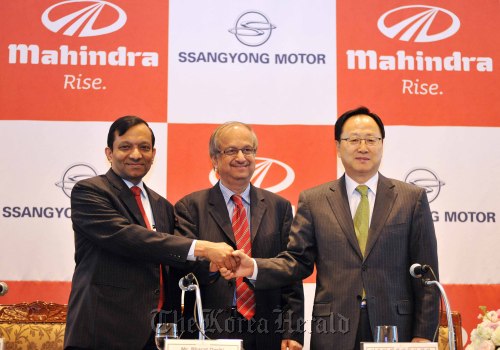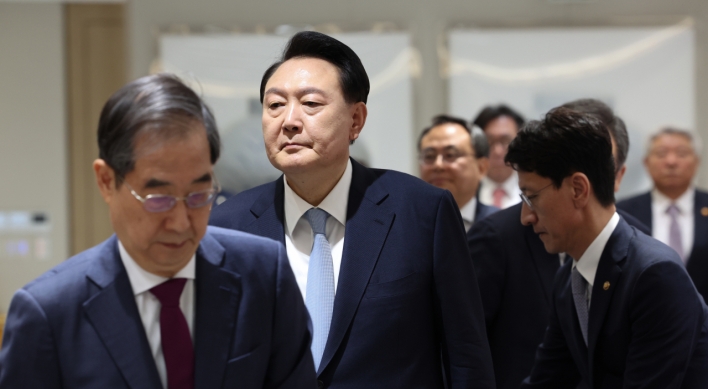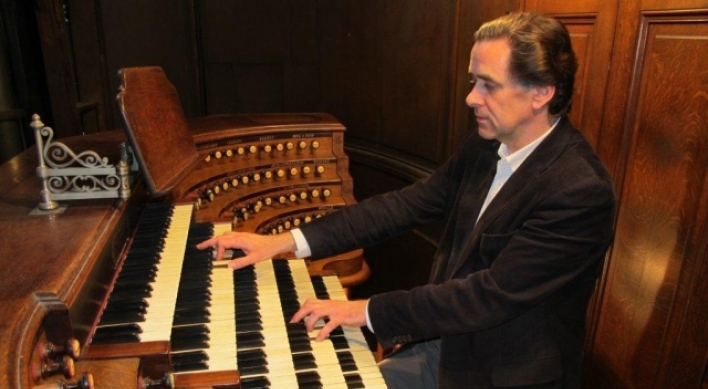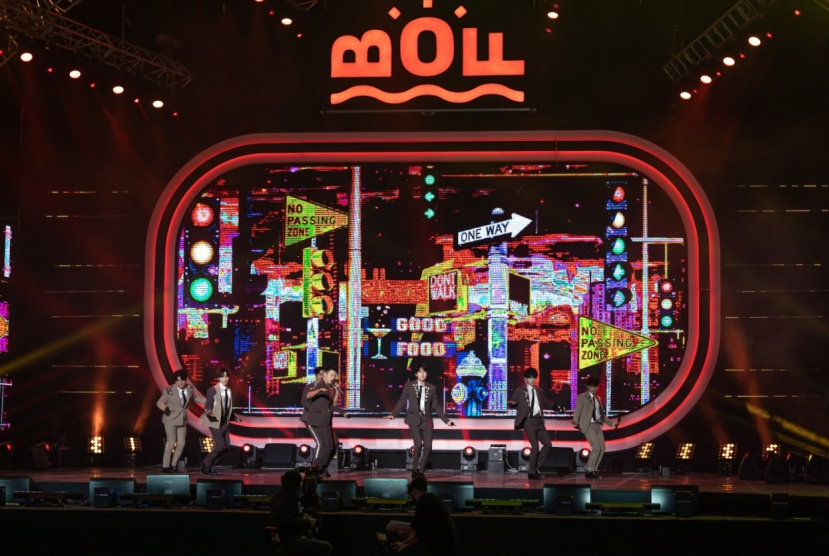
Mahindra & Mahindra Ltd., the majority shareholder of Ssangyong Motor, has continued to reiterate that it would invest in the automaker on a long-term basis development project.
The carmaker, in coordination with the Indian parent group, has raised about 200 billion won ($190 million) to develop facelifted versions of the luxury sedans Chairman H and Chairman W, and the new sport utility truck.
Ssangyong also plans to pour 40 billion won into advertising and other efforts to repair the company’s undermined brand image at home.
It is also looking to bolster its domestic sales network by increasing the number of dealerships to 190 from the current 150 this year, as it aims for 121,000 units in annual sales, up 40,000 units from the 81,000 units recorded in 2010.
“This is not the first international investment and this is not the first acquisition we made,” the parent group’s vice chairman Arnand Mahindra has said.
He stressed that the Indian investor does not seek short-term investment gains.
The two parties are currently working on introducing the Korando C and Rexton SUVs to the Indian market, to which the vehicles will be shipped as knock-down kits and assembled at Mahindra’s new facility in western India to avoid high tariffs.
Mahindra & Mahindra and Ssangyong are also looking for joint-marketing opportunities in emerging markets. They regard Africa as the next frontier for automotive growth.
Ssangyong executives say Africa is comprised of very diverse markets that range from the mature market of South Africa to the rapidly expanding ones of oil-rich nations.
They as well as officials of the Indian investor said Ssangyong has much potential for growth in the region.
In Korean market, Ssangyong is seeking to expand its lineup, which currently consists entirely of recreational vehicles and luxury sedans ― both of which are particularly sensitive to economic conditions ― that may go some way to explain the company being hard hit by the economic downturns of 1998-99 and 2008.
A company executive said that plans for small cars are in the works, but there is nothing solid going on at present, and since Mahindra has now taken over, decisions will be made with regard to synergy with Mahindra.
He projects that the automaker’s connection with Mahindra will open up the Indian market within the year, where the company is considering the Korando C and the Rexton SUVs as its lead vehicles.
“I think exports of knockdown kits to India can begin within the year, and, as Mahindra already has all the necessary facilities, going into India will not require investment,” he said.
“As exports to India will be in knockdown kits, they will not place additional burden on the company’s production line,” he added.
Ssangyong officials are also optimistic about the benefits gained from Mahindra’s sales network.
“Mahindra is famous for tractors and other agricultural equipment with a strong sales network,” a spokesman said. “I expect some efforts to aid our sales through that network.”
The automaker sold 10,364 vehicles last month, including 7,587 overseas ― a 40 percent increase from a year ago. The company sold 53 percent more units, 55,873, in the first half of the year compared to the same period last year.
Its Korando C, a midsize SUV, has performed exceptionally well since its launch in February, with more than 4,000 units sold worldwide every month.
The carmaker said it cost 28 billion won ($26.3 million) to develop the new Chairman W and hopes to sell 5,000 units this year.
With much riding on the vehicle, the company set an ambitious sales target of 20,000 units for this year, which is equivalent to around 66 percent of Ssangyong’s 2010 sales, and about a third of the figure for 2007, before the company became mired in financial troubles.
“I don’t think the targets are unrealistic,” Lee Yoo-il, CEO of the company, said.
He said the current environment is unfavorable with high oil prices and unstable exchange rates, but Korando C will be our first compact RV, which from some perspectives makes it a good match for current developments.
Ssangyong is now turning its focus to markets where it had previously paid little attention.
“A market that does well when oil prices rise is Russia, and our knockdown kits business in that country is doing very well. The South American markets, especially Brazil, also look very good,” Lee said. “The company is shifting the focus from Western Europe, which has an economic structure that requires time to recover.”
The company is not home free yet, however, with the issue of those who left the company or are on unpaid leave continuing to plague the SUV specialist.
Company officials say that Ssangyong has caused a lot of trouble for Korea, and to revive the company creditors and others involved had to make great sacrifice.
They say this is the reason for the automaker’s continued existence; to become a reputable company to repay the local community, the country and all those involved.
By Kim Yon-se (kys@heraldcorp.com)







![[KH Explains] How should Korea adjust its trade defenses against Chinese EVs?](http://res.heraldm.com/phpwas/restmb_idxmake.php?idx=644&simg=/content/image/2024/04/15/20240415050562_0.jpg&u=20240415144419)










